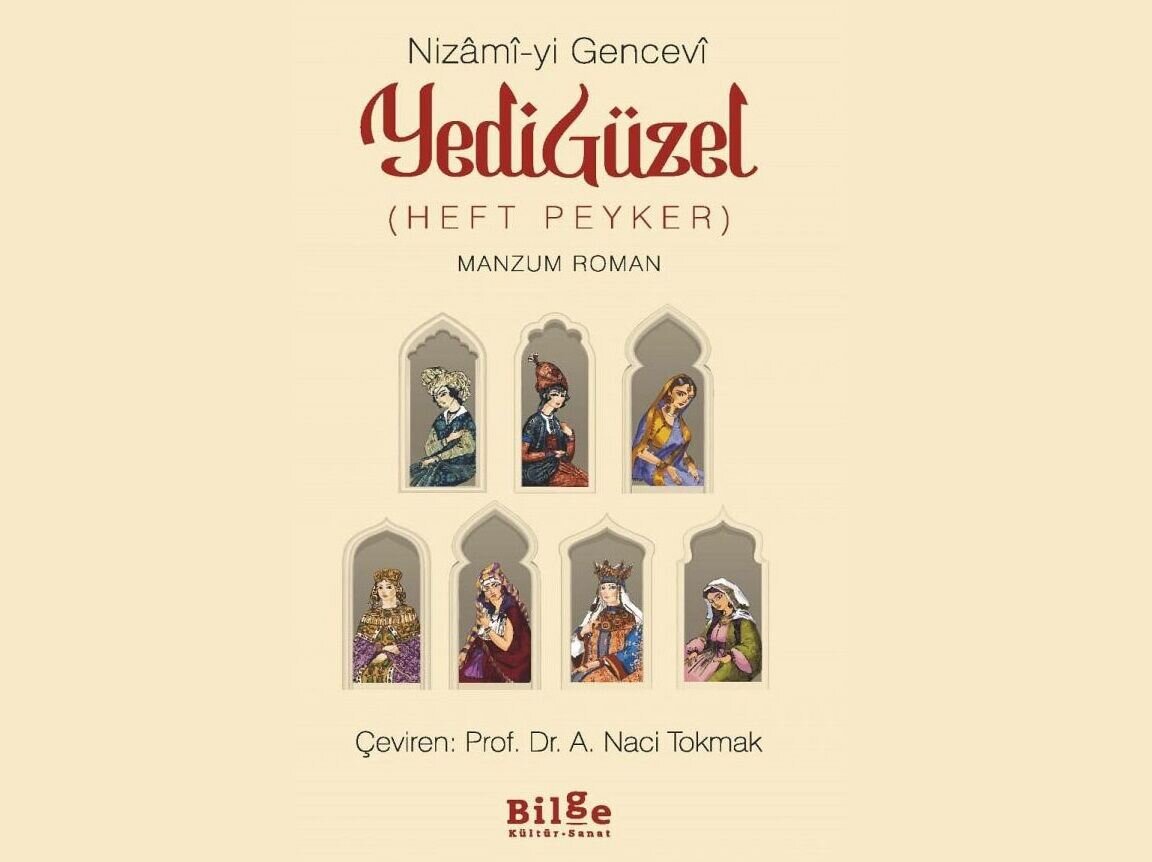Turkish translation of Nezami's classic “Haft Peykar” published

TEHRAN- A Turkish translation of Persian poet Nezami Ganjavi’s “Haft Peykar” has recently been published by Bilge Publishing House in Turkey in collaboration with the Cultural Attaché of the Islamic Republic of Iran in Istanbul.
Translated by Turkish scholar and distinguished professor of Persian language and literature A. Naci Tokmak, the publication spans 384 pages, with an initial print run of 1,000 copies, IRNA reported on Tuesday.
Composed by Nezami Ganjavi in the last decade of the 12th century, the classical Persian masterpiece Haft Peykar is a romanticized biography of Bahram V, who is also known as Bahram-e Gur.
In the introduction to his translation of Nezami’s "Haft Peykar," Tokmak emphasizes the significant influence of Nezami, not just within Persian literature but across the Islamic world, including the Ottoman Empire. He notes that many Turkish-speaking poets have drawn inspiration from Nezami's style and literary contributions. Nezami’s epic and romantic verses, especially the quintet of works known as "Khamsa," such as "Khosrow and Shirin" and "Leyli and Majnun," have served as a springboard for numerous Turkish poets.
Classic Ottoman poets, including Fuzuli and Yahya bey Dukagjini, have been directly influenced by Nezami. Fuzuli penned an epic titled "Leyli and Majnun," inspired by Nezami's work, which holds a prestigious place in Turkish literature.
Tokmak, with 52 years of teaching experience in Persian language and literature, is a prominent figure in the field in Turkey. He obtained his doctorate in Persian from the University of Tehran in 1956 and served as the head of the Persian language and literature department at Istanbul University for 17 years. His translations of works by notable figures in Persian literature as well as a variety of poets' works plays a pivotal role in the expansion and promotion of Persian language and literature in Turkey.
The “Haft Peykar” can be translated literally as “seven portraits”, but also with the figurative meaning of “seven beauties”.
Nezami gives an account of the birth of Bahram, the often-told story of his upbringing at the court of the Arab king No’man and the construction of No’man’s fabled palace, Khoarnaq.
Reared in the desert, Bahram becomes a formidable huntsman. Wandering through the palace, Bahram discovers a locked room containing the portraits of seven princesses, one from each of the seven climes, with whom he immediately falls in love.
Bahram’s father Yazdegerd I dies, and Bahram returns to Persia to claim his throne from a pretender. After much palaver, he is recognized as king.
He rescues his people from a famine. Next Nezami picks up the story of Bahram’s hunting expedition with the loose-tongued slave girl Fetneh, but alters the version known from the Shahnameh considerably.
Here the girl is not put to death, but eventually pardoned, and the king learns a lesson in clemency. The king sets out in search of the seven princesses and wins them as his brides.
He orders his architect to construct seven domes to house his new wives. The craftsman tells him that each of the climes is ruled by one of the seven planets and advises him to assure his good fortune by adorning each dome with the color associated with the clime and planet of its occupant.
The princesses take up residence in the splendid pavilions. The king visits each princess on successive days of the week. Each princess regales the king with a story matching the mood of her respective color. These seven beautifully constructed, highly sensuous stories occupy about half of the entire poem.
SAB/
